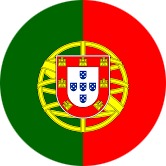PROGRAMME SUMMARY: -
Metrology is the scientific study of measurement. It establishes a common understanding of units, crucial in linking human activities. Modern metrology has its roots in the French Revolution's political motivation to standardize units in France when a length standard taken from a natural source was proposed. This led to the creation of the decimal-based metric system in 1795, establishing a set of standards for other types of measurements. Several other countries adopted the metric system between 1795 and 1875; to ensure conformity between the countries, the Bureau International des Poids et Mesures (BIPM) was established by the Metre Convention.
Metrology is the science of measurement and its application. NIST's work in metrology focuses on advancing measurement science to enhance economic security and improve quality of life.
Almost all of NIST’s research has a metrology component to it. NIST’s metrology-related resources and activities include calibrations, standard reference materials, standard reference data, test methods, proficiency evaluation materials, tools that facilitate the evaluation of measurement uncertainty, measurement quality assurance programs, and laboratory accreditation services that assist customers in establishing traceability of measurement results.
A key component of NIST’s metrology work is metrological traceability, which requires the establishment of an unbroken chain of calibrations to specified reference measurement standards: typically national or international standards, in particular realizations of the measurement units of the International System of Units (SI).
NIST assures the traceability to the SI, or to other specified standards, of measurement results that NIST itself provides, either directly or through an official NIST program or collaboration. Other organizations are responsible for establishing the traceability of their own results to national reference standards maintained by NIST or to other specified reference standards. Learn more about metrological traceability.
OBJECTIVE:-
- Identify and analyze the factors affecting performance of measuring system
- Choose appropriate instruments for the measurement of voltage, current in ac and dc measurements
- Principal of operation and construction of basic instruments for measurement of Electrical quantities
- Sources of errors in measurement system
- Standards used in measurement system
THE SCIENTIFIC CONTENT OF THE PROGRAM: -
- Introduction of metrology.
- Introduction measurement system.
- Characteristics of measurement system.
- Dynamic characteristics.
- Measurement standards and their classifications.
- Errors in measurement.
- Sources of error.
- Calibration in meters.
- Classification of instrument.
- Precision Measurement
- Units and Standards of Length
- Errors in Measurement
- Types of Basic Measuring Equipment
- Practical Introduction to Measuring Instruments
- Interpretation of Engineering Drawings
- Case studies and solving examples.
WHO SHOULD ATTEND :-
- All levels of technicians.
- Beginner in ELECTRICAL ENGINEERING
- Beginner technicians’ electrical measurements and instrumentation
- Beginner in Electrical instruments
- Beginner in Measurement system

























































